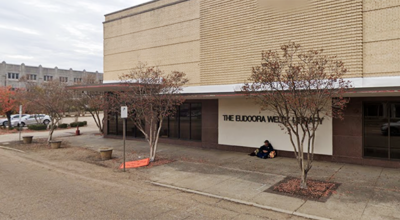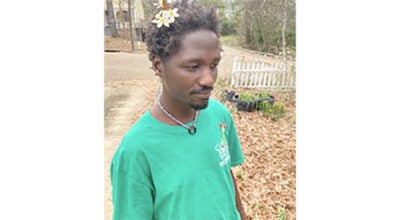Soft-shell crabs you love are likely from around the world, but scientists aim to change that
Published 9:57 pm Sunday, February 10, 2019
That soft-shell crab you enjoy at your favorite seafood restaurant or that cocktail crab you order as an appetizer likely came from Southeast Asia, not the Mississippi Gulf.
But, if research at the University of Southern Mississippi’s Blue Crab Hatchery pans out, you might one day be eating soft-shell blue crabs farmed by Coastal fishermen in ponds on their own land.
“What this work does is a diversification of the blue crab industry,” said Kelly Lucas, aquaculture director at the Thad Cochran Marine Aquaculture Center, located near the Blue Crab Hatchery in Ocean Springs. “Fishermen can switch from the wild to supplement their fishing by raising (blue crabs).”
The university operates the only blue crab hatchery in the United States. Production of soft-shell blue crabs is one of the oldest aquaculture industries in the country.
The Blue Crab Hatchery has been around since the early 2000s. It was preceded by a hatchery in Maryland, which no longer exists.
The research done at the hatchery is vital to the livelihood of the 150 or so blue crab fisherman in Mississippi, who may have trouble getting the crabs from the wild.
“If we can figure out how to raise blue crabs in ponds at certain salinity levels for commercial production, we can teach the commercial fishermen, instead of getting crabs from the Mississippi sound, to grow them in ponds,” said Paul Mickel, chief scientific officer at the Mississippi Department of Marine Resources.
Declines in the capture of soft-shell blue crabs commercially, along with continued decreases in young crabs, have led to smaller catches for fishermen who depend on the crabs for their livelihood. It is imperative, experts say, that a sustainable alternative to capturing blue crabs in the wild be developed.
“The chance of finding a soft-shell crab in the wild is just luck,” Mickel said. “There are many more hard-shell crabs.
“If you grow them in the pond, you can harvest them when they’re soft and the price goes through the roof.”
Lucas said timing and laws also play a role.
“There are certain times of year when crabbing is really good, and certain times, like when the water is choppy, when it’s harder to catch blue crabs,” she said. “Five-inch crabs are legal to fish for, but cocktail — 3-inch appetizer crabs — and smaller bait crabs aren’t legal to harvest in Mississippi.
“Restaurants really like the cocktail crabs to serve as appetizers. It’s a two-bite crab — typically a blue crab from overseas, because we don’t legally harvest those from the Gulf of Mexico.”
RAISING BLUE CRABS IN OWN PONDS GOAL
When diners order soft-shell blue crab in a restaurant, it’s likely not from a local source, and they’re probably paying top dollar. If Coastal fisherman could raise the blue crabs in ponds on their own land, the supply would be more plentiful and the cost might go down.
Sonny Schindler, captain of Shore Thing Fishing Charters of Bay St. Louis, works with the scientists at the Blue Crab Hatchery. He has special, legal permits to use smaller blue crabs as bait on his fishing charters.
Schindler knows the potential these smaller crabs could have for fishermen.
“A lot of the stuff we fish is in dirty, muddy water, so sometimes the artificial bait, and even the shrimp, don’t give out enough smell as the crabs,” he said. “They work so good. It’s unbelievable.
“We have seven boats in our fleet. The boat with the crabs on it would just obliterate the other boats, even in crazy, bad conditions.”
Gourmet aficionados prefer the blue crab’s sweet meat over other locally caught crab. But blue crabs require both inshore briny water and near-perfect salinity of Gulf waters to complete their life cycle.
“Soft crabs are worth much more money than a hard crab,” said Harriet Perry, senior research scientist at Southern Miss’ Gulf Coast Research Laboratory, which is affiliated with the Blue Crab Hatchery. “There are some soft crabs selling online for $60 to $90 a dozen.
“We’re looking for (Coastal) fishermen to continue their livelihood regardless of the environment because we can supply those crabs through aquaculture.”
Aquaculture is the cultivation of aquatic animals, especially fish and shellfish, in controlled marine environments. And that’s what the scientists at the Blue Crab Hatchery do.
“In the northern Gulf, we have an excess of blue crab larvae, but the early juveniles are not surviving,” Perry said.
She said the high salinity of the Gulf brings in predatory fish who eat the young crabs.
“We’re taking the approach, through aquaculture, we can not only maintain, but increase, the blue crab fishery,” Perry said.
WHEN THEY HATCH, ‘THEY LOOK LIKE A SPACE ALIEN’
The blue crab’s scientific name, Callinectes sapidus, means “savory, beautiful swimmer.”
Large males have bright blue claws and legs. Mature females have orange-tipped claws.
Aquaculture of blue crabs at the hatchery starts with only one crab — a female carrying eggs.
Scientists test the crab, obtained from a local fisherman, for parasites and disease. If none are found, it’s put into a tank for one week until its eggs spawn.
Then the larvae — an astounding 2 million — are harvested. That’s more than the 500,000 capacity of the Blue Crab Hatchery, Perry said.
“They go into five hatchery tanks of 100,000 larvae each,” she said. “When they hatch, they don’t even look like a crab. They look like a space alien.”
The larvae are called “zoea” when they hatch, and they then go into “zoeal” molting, which is when they begin to shed their hard shells and grow larger.
The crabs go through seven zoeal moltings and then become a second type of larvae, known as a “megalopa.”
“We call them ‘megs’ for short,” Perry said. “That animal looks like a lobster.”
Once the larvae reach the megalopal state, they are moved to large, rectangular tanks where they are allowed to get a little bigger. They continue to shed their shells and begin to look like crabs.
“In nature, as (the crab) is moving offshore to inshore, he’s adjusting to lower salinity,” Perry said. “We duplicate that in the lab.”
BIG PROBLEM? CRABS EAT EACH OTHER
It may seem like the scientists have got this crab-growing thing down, but it’s not easy. There’s only a 25 percent to 45 percent survival rate in the hatching stage.
The highest mortality takes place in the rectangular tanks, called raceways.
“Sixteen percent to 30 percent survival rate in the raceway state,” Perry said. “They’re cannibalistic and they have claws.
“We have self-predation.”
After the rectangular tanks, the surviving crabs are taken to low-salinity, quarter-acre ponds at the Department of Marine Resource’s Lyman facility in Gulfport.
“What you want to harvest is a crab that shows signs of shedding — he gets rid of that hard shell,” Perry said. “That’s how you get a soft-shell crab.
“What we would ultimately do, is if someone was going to go into the (crab-raising) business, we would sell the juveniles and they would raise them to the soft-shells.”
The Blue Crab Hatchery is not at the point of selling juveniles to crab fishermen yet.
“We’re trying to learn the most efficient way to do things,” Perry said. “We’re doing research so we can help the fishermen.”
BLUE CRAB HURDLES
Mickel said there are two big hurdles the scientists have to overcome — the fact that the crabs like to eat each other and how to get the lowest salinity in the ponds.
“If you’re spending a bunch of money on salt, then your business plan goes down,” he said. “Once we figure out the research, we can teach it to the people of Mississippi.
“It’s important that we figure out this aquaculture to take the pressure off natural resources and with blue crab fisheries — creating a new market is a benefit.”
Mickel said it might still be several years before scientists have the answers they need.
“There are so many problems we have to solve — it’s hard to put a timeline on it, but we’re aiming for five years,” he said.
Schindler is anxiously awaiting the time when it is legal for all fishermen to raise and use the tiny bait crabs.
“The times that you need them — they outperform anything in that low, salty water,” he said. “The fish everyone want — red fish, the big drums, the sheep head — go for them.
“We are big fans of them.”
More News






